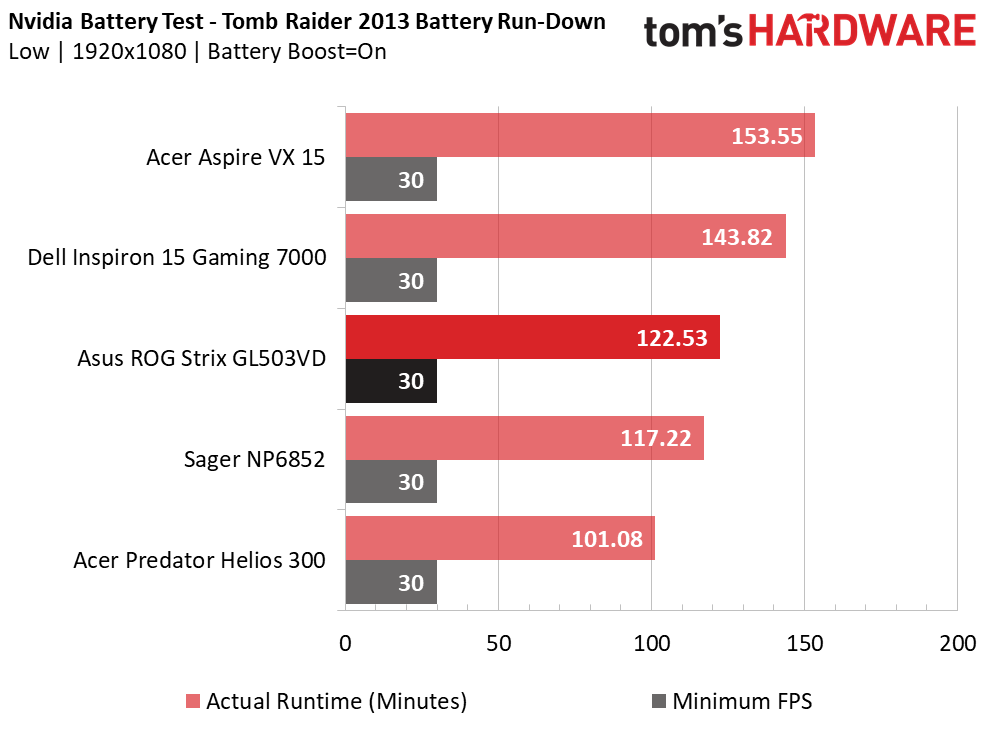Asus ROG Strix GL503VD Gaming Laptop Review
Why you can trust Tom's Hardware
Battery, Thermal & Display Testing
Battery Test - Tomb Raider 2013 Battery Rundown
To test battery life, we set each laptop’s battery profile to Balanced while running Tomb Raider’s built-in benchmark at the lowest detail preset. The frame rate is locked at 30 FPS through GeForce Experience’s Battery Boost to limit the strain on the battery. Meanwhile, a script running in the background monitors and time-stamps the system’s battery percentage. The laptops are set to hibernate once battery levels reach 5%. We test the battery life at 200 nits.
The Asus ROG Strix GL503VD contains a 4-cell, 64Wh battery, which provides the laptop about 1 hour and 40 minutes of uninterrupted game time. The Strix’s battery life is not bad, by any means; if we were to compare it to hefty gaming laptops with CPUs and GPUs, the Strix would top our charts. However, the laptops in our roundup all have a good combination of low-power components and large batteries.
Last place goes to the Acer Predator Helios 300, whose more power-hungry GTX 1060 prevents it from topping our chart. The Sager NP6852 has a slightly smaller 62Wh battery and a GTX 1050 Ti, placing it in fourth. The Dell Inspiron 15 Gaming 7000 earns silver by outlasting the Asus by about 20 minutes; its stronger GTX 1050 Ti is balanced out by a 74Wh battery and weaker Core i5-7300U. Finally, the Acer Aspire VX 15 has a fairly standard 52.5Wh battery capacity, but it also features the lowest-end configuration out of the featured laptops.
Thermal Testing
Normally, we use our Optris PI 640 infrared camera to measure the laptop’s thermals. However, as we stated in the Product Tour, the system’s hard drive is connected to the bottom panel of the Strix. This means that we couldn’t capture thermal images with the cooling solution exposed. Instead, we used GPU-Z's GPU diode thermal logging. For more information about how we test, be sure to check out our Measurement Science article.
Thermal performance is always a priority when considering a gaming laptop; packing power-hungry components into a small enclosure is a surefire way to produce heat. Luckily, none of the components in our featured laptops has particularly demanding cooling requirements. A decent cooling solution will keep temperatures low. In comparison to its contenders, the Asus ties the Dell in third place, and the deciding factor is only a handful of degrees. The Sager is an outlier, and we found that its cooling was simply inefficient, driving its GTX 1050 Ti’s temperatures up to 100° C.
The Asus runs quite cool overall, and you shouldn’t be worried about the GTX 1050 overheating during extended gaming sessions so long as you’re playing in a relatively cool environment.
Display Testing
We used the SpectraCal C6 Colorimeter to measure the display. Be sure to check out our Display Testing Explained article for a full description of our test methodology.
Get Tom's Hardware's best news and in-depth reviews, straight to your inbox.
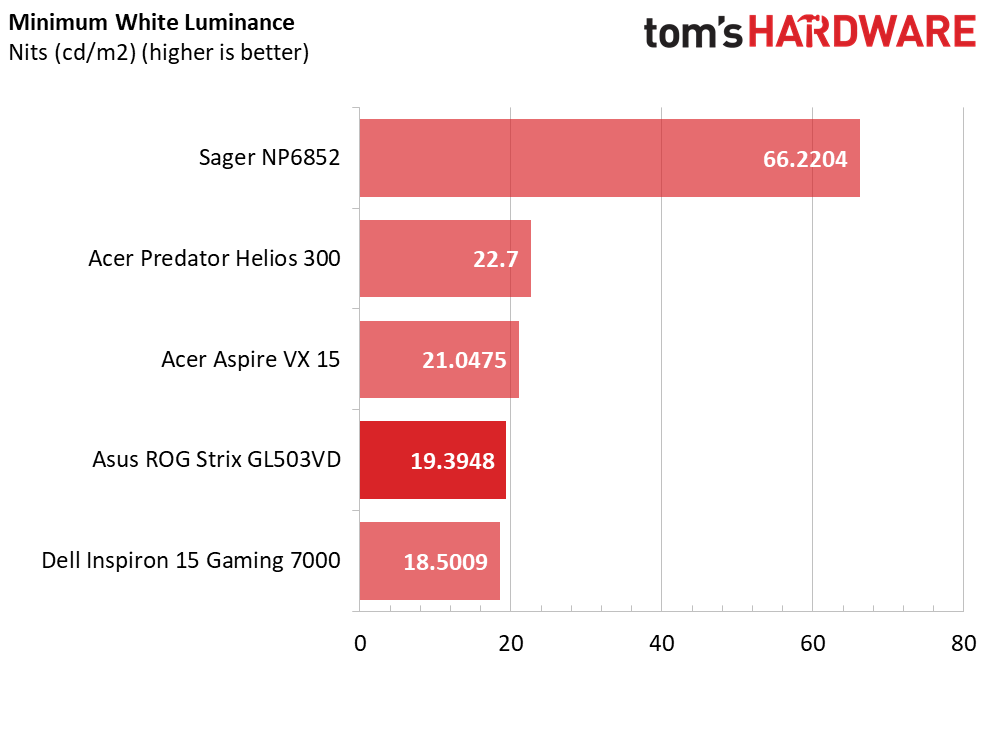
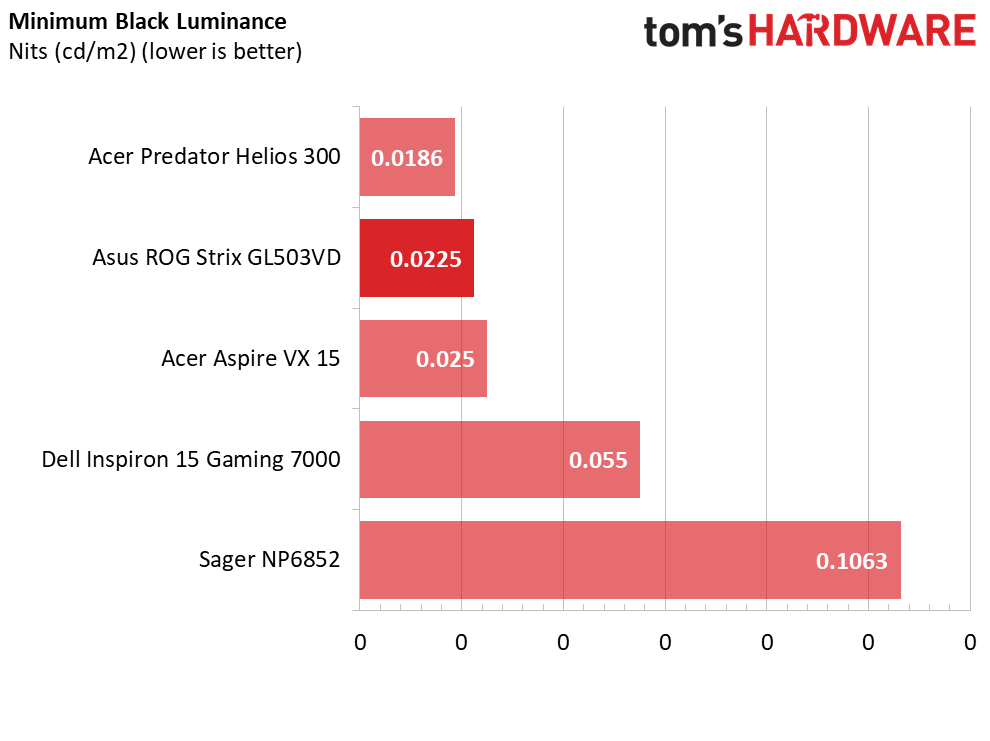
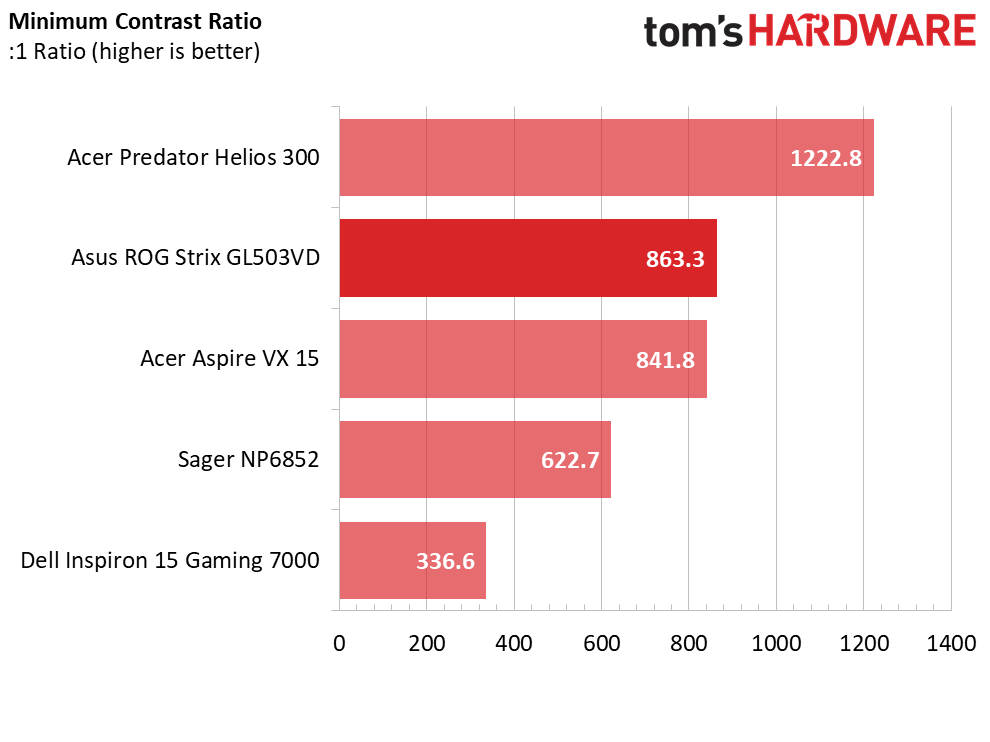
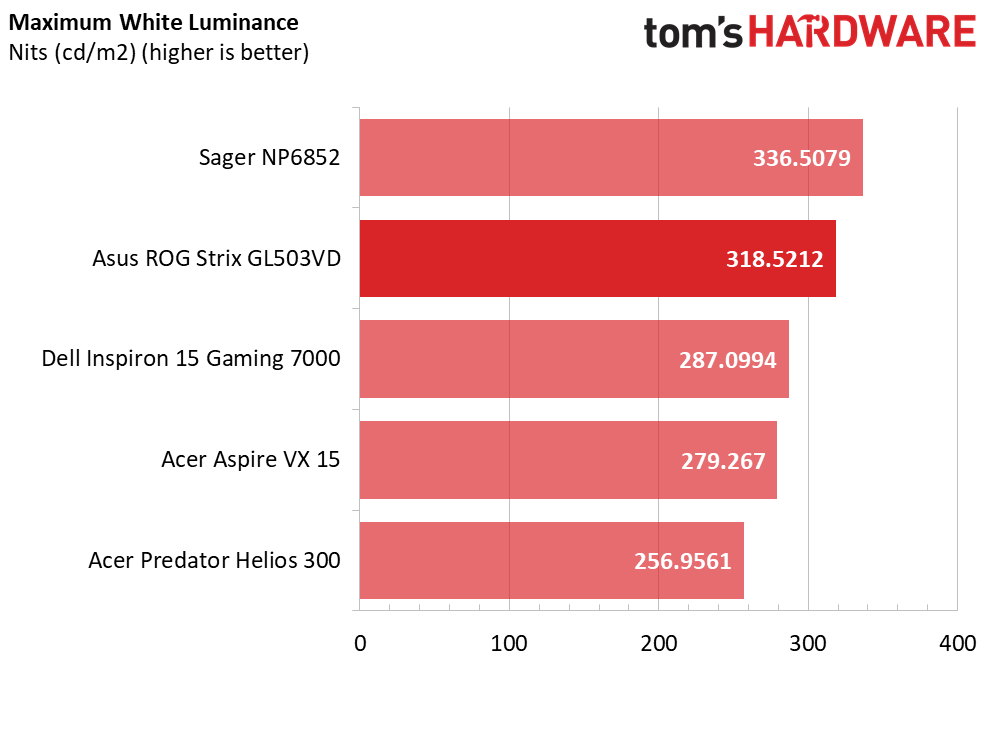
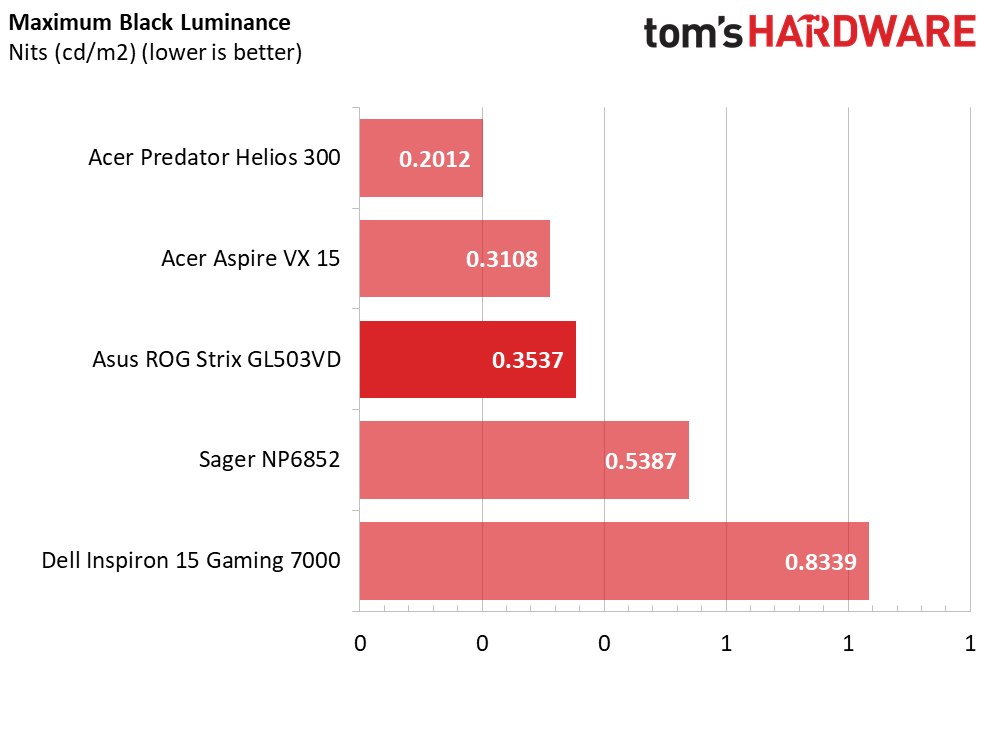

Contrast is determined by taking the white luminance, or the highest brightness measurement at a given setting, and dividing it by the black luminance, or the lowest brightness. The higher the contrast, the sharper the display’s image will be, and an excellent contrast ratio to aim for is 1000:1. The minimum white luminance measures at a relatively low 19.3948 nits, which is balanced by a low black luminance of 0.0225, resulting in a contrast ratio of 863.3:1. At maximum brightness, the white luminance is quite high, at 318.5212 nits, and the black luminance is a decent 0.3537 nits. The maximum contrast sits at 900.5:1. The Strix’s contrasts are great, but not as good as the Sager’s.


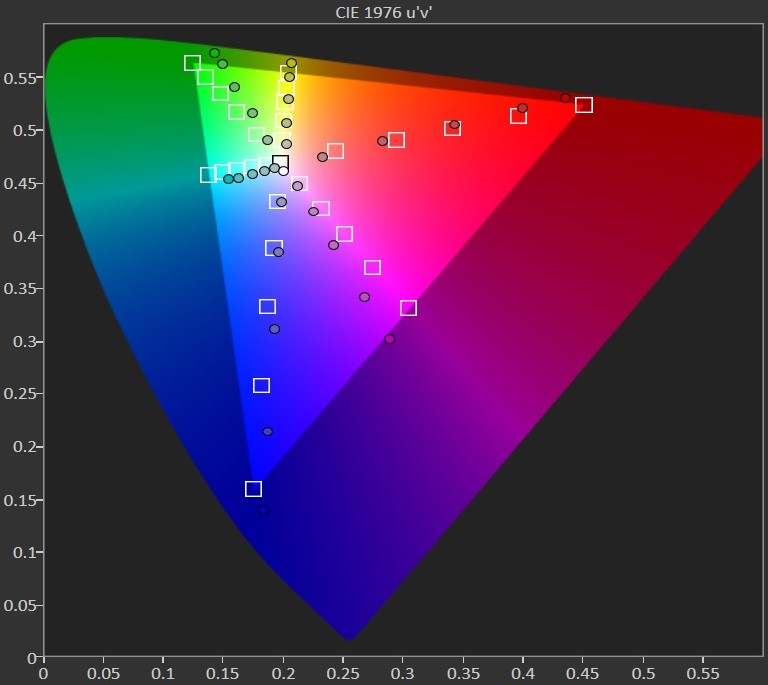


No display has perfect RGB balance; unfortunately, the Strix is a good example of this. From minimum brightness, RGB levels are balanced, and remain so until we raise brightness to about 40%. However, increasing the brightness further causes green levels to drop and blue levels to rise. As a result, the display delivers a slightly bluish tone.
Grayscale accuracy is intimately tied to a display’s RGB levels, and is measured in DeltaE 2000, with values of 3 or lower being imperceptible. The Strix has an average DeltaE 2000 of 4.415, meaning grayscale inaccuracies are readily visible. In particular, you’ll notice the errors at 60% brightness and higher. Lower brightness settings have less grayscale errors.
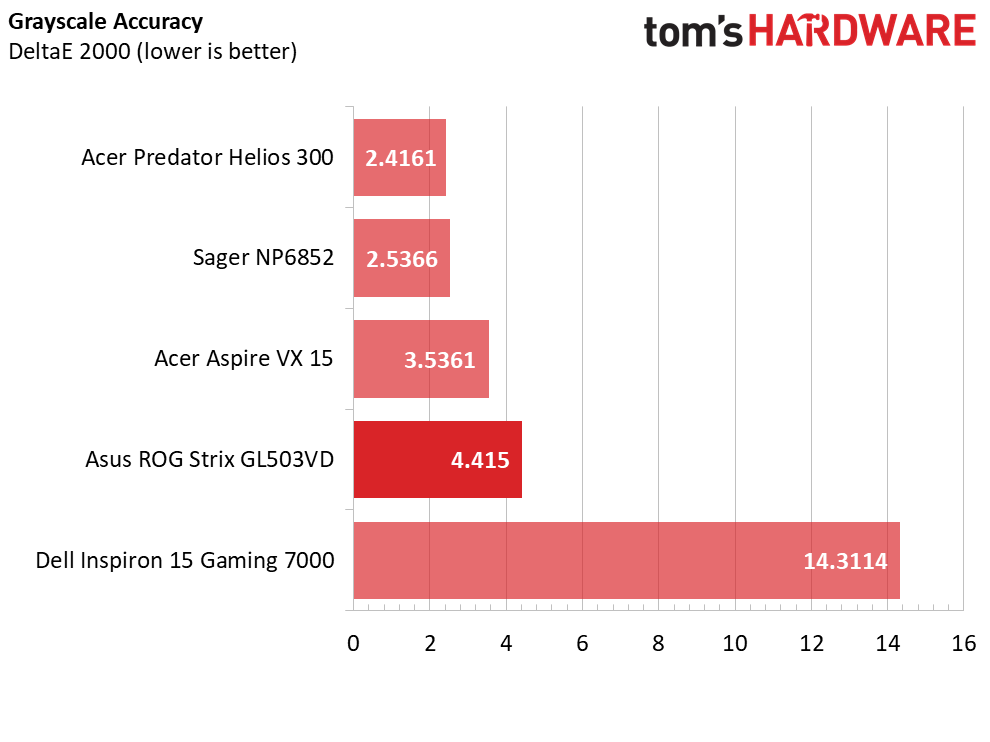
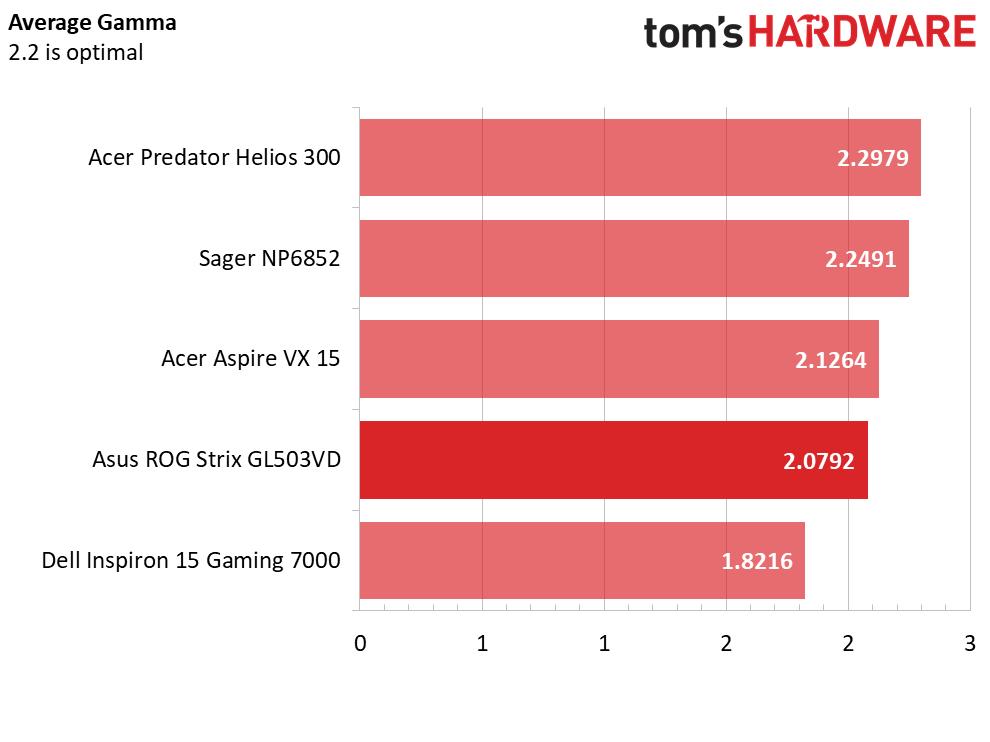
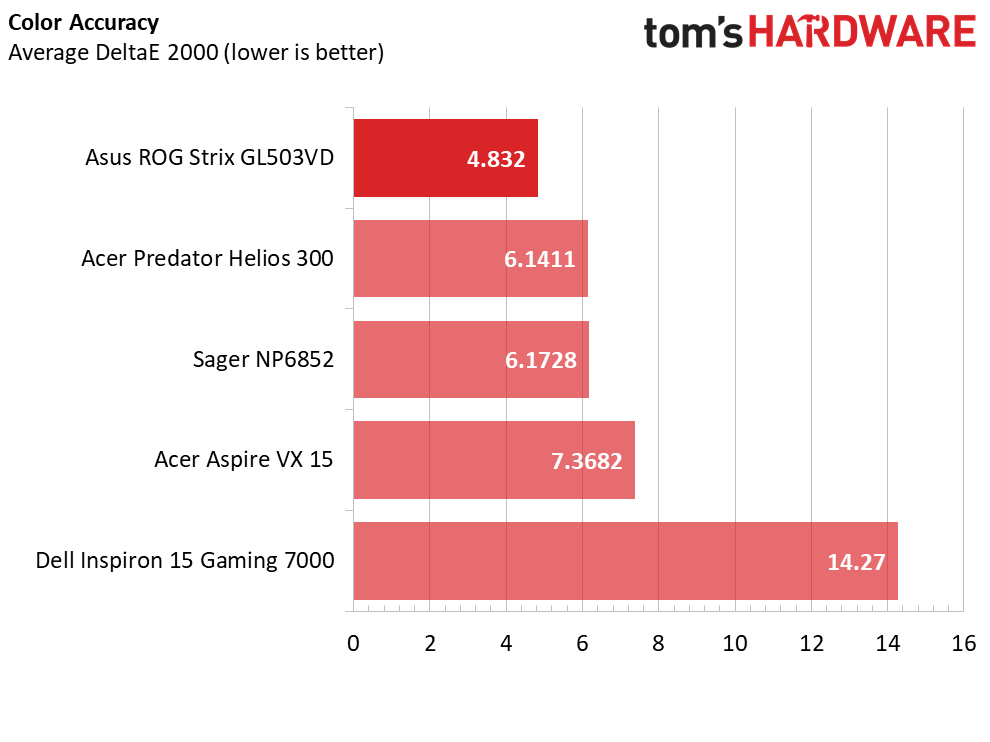
A well-saturated display should aim for a gamma average of 2.2. The gamma-point chart depicts a sine wave-like pattern, with oversaturated gamma between 0% and 40% brightness, and undersaturated gamma from 40% onward. This results in a gamma-point average of 2.0792, which is below optimal.
Overall color accuracy is measured the same way as grayscale, meaning values of DeltaE 2000 below 3 represent excellent accuracy. Unfortunately, the Strix’s display exhibits an average DeltaE 2000 of 4.832, which means the color errors are noticeable. In particular, you’ll find errors in blues, yellows, cyans, and greens. However, the Strix easily has the most color-accurate display in this test group, so it should be your first choice if color accuracy is somewhat important to your needs.
MORE: Best Gaming Laptops
MORE: Gaming Laptop Previews
MORE: All Laptop Content
Current page: Battery, Thermal & Display Testing
Prev Page Gaming Benchmarks Next Page Price Analysis & Conclusion